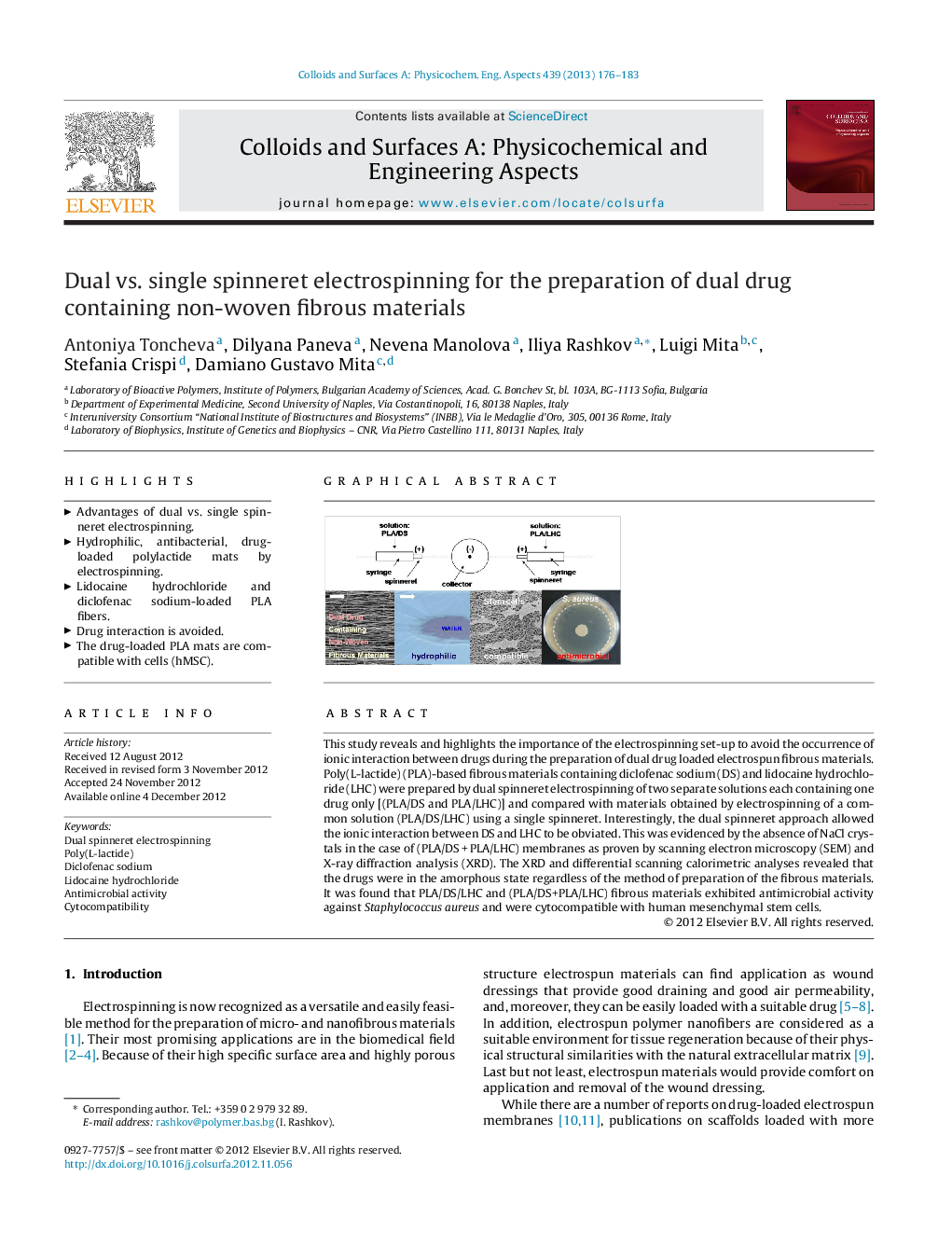| Article ID | Journal | Published Year | Pages | File Type |
|---|---|---|---|---|
| 593312 | Colloids and Surfaces A: Physicochemical and Engineering Aspects | 2013 | 8 Pages |
This study reveals and highlights the importance of the electrospinning set-up to avoid the occurrence of ionic interaction between drugs during the preparation of dual drug loaded electrospun fibrous materials. Poly(L-lactide) (PLA)-based fibrous materials containing diclofenac sodium (DS) and lidocaine hydrochloride (LHC) were prepared by dual spinneret electrospinning of two separate solutions each containing one drug only [(PLA/DS and PLA/LHC)] and compared with materials obtained by electrospinning of a common solution (PLA/DS/LHC) using a single spinneret. Interestingly, the dual spinneret approach allowed the ionic interaction between DS and LHC to be obviated. This was evidenced by the absence of NaCl crystals in the case of (PLA/DS + PLA/LHC) membranes as proven by scanning electron microscopy (SEM) and X-ray diffraction analysis (XRD). The XRD and differential scanning calorimetric analyses revealed that the drugs were in the amorphous state regardless of the method of preparation of the fibrous materials. It was found that PLA/DS/LHC and (PLA/DS+PLA/LHC) fibrous materials exhibited antimicrobial activity against Staphylococcus aureus and were cytocompatible with human mesenchymal stem cells.
Graphical abstractFigure optionsDownload full-size imageDownload as PowerPoint slideHighlights► Advantages of dual vs. single spinneret electrospinning. ► Hydrophilic, antibacterial, drug-loaded polylactide mats by electrospinning. ► Lidocaine hydrochloride and diclofenac sodium-loaded PLA fibers. ► Drug interaction is avoided. ► The drug-loaded PLA mats are compatible with cells (hMSC).
